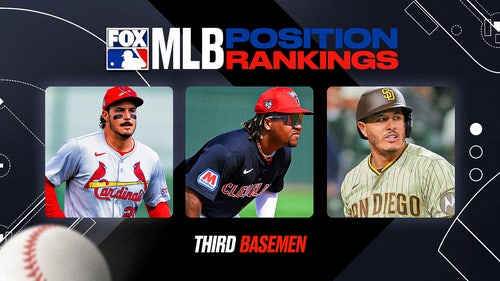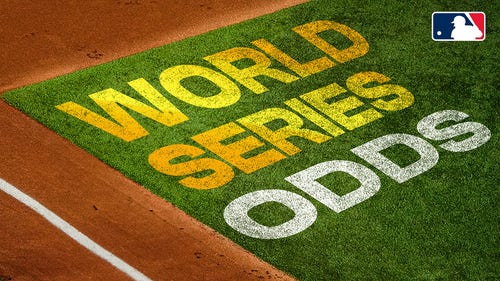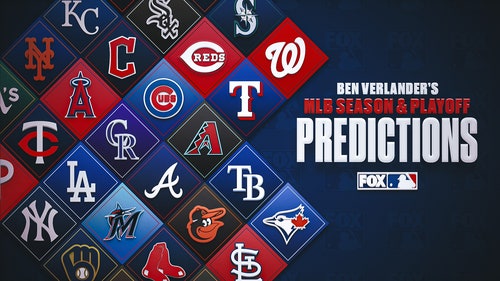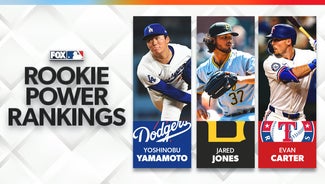
Red Sox: Worst outfielders in franchise history
The Boston Red Sox have had some wretched outfielders whose play was often amusing and frustrating. Here are my selections.
The first round of examining Boston Red Sox futility was the infielders. That was a collection that had to be reduced considerably. Now the outfielders.
One of the great difficulties in determining fielding ability prior to advanced metrics is the reliance on items such as fielding percentage that can be misleading. There are some dWAR stats available, but my reliance is on first person accounts by myself and others that I remember.
For myself, I have to question if my opinion is being slanted by the combination of seeing a few bad plays and assuming that is the body of work. A second point is that I may have an ingrained prejudice based on an abhorrent behavior pattern. That, however, is for this exercise acceptable.
The outfielders I will mention cover a range of my experience of being a Red Sox fan. As I grew older and better understood some of the basics of outfield play my opinions got tweaked. The understanding of positioning, closing the gaps, going back or in on a ball, relative arm accuracy, and the ability to understand who their partners are in the outfield.
Some that I will single out had decent performances elsewhere – All-Star selections and even Gold Gloves, but this is about Boston. The past is what it is, so my reference is directed to what I saw in Boston.
The worst of the outfielders also will include some hitting futility. Poor hitting is often counterbalanced by great defense. A player can save enough runs (that DRS stat) that it is similar to adding in another 25 RBI.
Two is better than one – Hanley and Manny
Hanley Ramirez was absolutely the bottom of the defensive barrel in his adventurous activities in left field. Give credit to HanRam as he willingly took on the task, but his skill set was certainly missing. This is somewhat unusual since infielders often can make the adjustment. Possibly the only one that could match Hanley’s futility was Kevin Youkilis.
Ramirez was an embarrassment. His reactions to the ball were nil. Hanley was lost on what to do once he captured the ball. Which base? Where to throw it? What’s a cut-off man? Will it hit the wall? Will I hit the wall? Ramirez finished dead last in UZR/150 (-31.9).
Manny Ramirez is remembered for some rather bizarre moments in the outfield. Always an adventure and a “Manny being Manny” moment could surface at any time. The beauty of Ramirez is his hitting. Manny could put a lounge chair in left and sip Margarita’s on defense and still be valuable.
If you are a believer in advanced fielding metrics Manny has a career -20.2 UZR/150. Manny also chipped in with a Defensive Runs Saved (DRS) of -96 for his career. The only reason Manny was in the field is the Red Sox already had a fairly competent Designated Hitter.
Not so Sweet Lou
One play can live in infamy and it is often not the fault of the player – sometimes it is. A ball bouncing off Jose Canseco for a home run, but Boston had a player kick a ball for a home run. Now that is a difficult task, but not for Lou Clinton.
Clinton’s moment of shame came in 1960 when the Indians Vic Power hits a shot off the top of the fence at Municipal Stadium. The ball then hits Clinton on his foot and Clinton either kicks it (that is the best story) or it bounces over the fence for a home run – never touching the ground.
Clinton posted a career dWAR of -2.1 and spent five seasons with the Red Sox. As a hitter, Clinton never materialized except for one hot streak in 1962 that boosted his season average to .294. The next season it was back to normal at .232, but with 22 home runs. Clinton’s right-handed bat never really produced as projected – a typical Red Sox tale of so many.
Clinton’s home in the outfield was generally in right field, but he was replacing Jackie Jensen, who had retired, and JJ was one of the best defensively. From my memories, Clinton had a strong-arm – maybe above average, but his ability to charge a base hit often negated that. When you look at all the great right fielders Boston has had Clinton just stands out as rather pedestrian.
No Mo is a good thing
What we they thinking? You traded Bronson Arroyo for who? The Red Sox are traditionally mesmerized by right-hand power even if that power has a history of being as consistent as electrical service in the Sudan. Enter Wily Mo Pena.
More from BoSox Injection
You would sit in right field and see Trot Nixon play and then you would see Wily Mo. How did Pena ever have a -7.9 UZR/150 for his career? That was astonishingly lower than I thought it would be. In Boston, it was a significantly lower, especially center field. The numbers are Prozac depressing, but observing it first hand was enough to ask for a ticket refund.
Pena in the field was – to put it kindly – incompetent, but then came the hitting. Pena would smoke towering blasts – unfortunately, they are as rare as a snow-free winter in Boston. Then comes a 30.3% K/9. I lost track of the number of teams waiting for Pena to surface as a legit 40+ home run guy. Last I heard Pena was in Japan and we still managed to maintain diplomatic relations.
The irony of it all is the Red Sox traded Pena for Chris Carter who is his equal for swings and misses, but able to hit dingers more consistently. And Arroyo? Arroyo won 112 games after being shipped out.
Jimmy’s replacement
When you are brought to town for Jim Piersall you better bring your glove to match. Gary Geiger played left and center for Boston and I remember him best in center. Geiger happened to be one of my favorite players and I am still of the opinion if he was not so injury prone he may have had a more respectable career. Geiger also matched teammate Jensen with a fear of flying.
Geiger actually led the team in home runs in 1961 with 18. Geiger also hit an anemic .232. That was an awful post-Ted Williams Red Sox collection. Even newcomer Carl Yastrzemski was somewhat of a bust. Geiger played seven seasons with Boston hitting .253 and providing limited power.
Examining the dWAR for Geiger’s career it is -1.8, but the true story is what I saw far too often in center field. Geiger was a “hesitant.” – a term I once heard a scout describe as a player who stalls on a ball instead of instinctively getting a jump on it. Geiger’s arm was also one that matches up with Jacoby Ellsbury or Johnny Damon.
Being a favorite of mine I hate to place Geiger on this list, but he was just not that good of an outfielder.
Five years too late
One of the saddest baseball moments for me was watching Willie Mays flop around in centerfield for the New York Mets in 1972-73. Willie just didn’t know the party had ended about five years earlier and didn’t go home. That was Mike Cameron in 2010.
Cameron won three Gold Gloves in his career and was considered an excellent outfielder – primarily in center. Cameron was lifetime .249 hitter, but had some sting with the bat once hitting 30 home runs. Cameron also led the American League in strikeouts (176) one season. The Red Sox signed Cameron as a free agent with the intent of moving Ellsbury to left field. A double whammy ensued.
In Kansas City, Ellsbury got run over by a truck disguised as a third baseman, Adrian Beltre. That put a damper on Ellsbury’s season, but Cameron was a nightmare in center. The game was gone for Cameron as his UZR/150 was -27.6.
Sometimes with fielding metrics, there can be a down season, but observing Cameron this was no down season. Routine plays became an adventure, throws were questionable, balls to the right or left became doubles and finally, a groin injury ended his misery. Since Cameron was locked into a two-year deal he returned in 2011 and 2010 season actually looked good. Cameron hit .143 and was designated.
This signing I considered one of the worst of the Theo Epstein era. Cameron was shot and the team overreacted to some negative metrics on Ellsbury in 2009. What made it even more depressing is Cameron was an extremely well-liked player who was noted for interacting quite positively with fans.
The Throw
There are arms that are weak and then the arm of Jose Tartabull. Tartabull was a part-time outfielder with the Red Sox and part of the impossible dream team of 1967. A career dWAR of -2.0 in nine seasons simply does no justice to Tartabull’s incapabilities.
Let’s do the positive on “The Throw.”
In 1967 Tartabull saved a game thanks to his arm. This was the proverbial “Blind Squirrel” moment. The scene was Chicago and it was late August. The Red Sox had a 4-3 lead and one out in the ninth. Ken Berry was about to come home on a sacrifice fly when Tartabull unleashed a throw to home. Credit veteran Elston Howard with a superb block of the plate and Berry was out.
The rest of the story is Tartabull in right field at Fenway Park was a disaster. First to third was automatic on any ball hit to right. Even the most ponderous of base runners could make the dash with little or no fear of being cut down. As a ball hawk, Tartabull had limited ability going to his right at Fenway. Tack on to his i hitting of .255 with the Red Sox in 255 games. And no home runs.
Beyond any doubt the weakest arm I ever saw at Fenway in right field.
Dishonorable Mention
When Tony Conigliaro was beaned in 1967 the Red Sox struck gold – really Ken Harrelson did. Hawk was essentially “fired” by the A’s owner Charlie Finley and became a free agent. Harrelson could hit with power and did, but not until the following season when he paced the American League in RBI. Hawk in the field was not a ballhawk.
Harrelson would play right field and it was an adventure. A career dWAR of -8.5. Harrelson had no instinctive abilities in the outfield and played first base for the bulk of his career games.
Israel Alcantara, just lacked any hustle. With Boston, his indifference had him quickly benched despite his hitting potential. Manager Jimy Williams refused to play Izzy despite the pleadings of GM Dan Duquette.
Izzy’s temper and dysfunction were well-known. A suspension at Pawtucket for an on-field brawl and later being dismissed by a Korean team as a locker room problem despite his thunderous bat.
Lenny Green played only two seasons in Boston and I am quite thankful for that. This, however, was the Red Sox of the mid-1960s and just about anyone was given a chance – even Green. The few games I saw him clearly demonstrated equal deficiencies in left and center field.
Jim Rice was a DH for a reason and that reason was a combination glove and arm. Still, Rice put in over 1,500 games in the outfield – mostly in left. Rice was amazing – an extremely athletic person, but it never translated to the outfield. Jump on the ball was minimal and his arm resulted in a high number of assists as teams would challenge his arm strength and accuracy.
I have Carl Everett listed and in all honesty, Everett was an average fielder. A power hitting switch hitter, but a personality that who make a viper seem like a household pet. Carl had a knack for alienating just about everyone and was dubbed “The mouth from the South Side” when he played for the White Sox. From gay bashing to moon landing denials. You will never find “Mouth” at a MENSA meeting.










































































































































